USS Oklahoma (BB-37)

History

Battleship No.37, USS Oklahoma was a Nevada-class super-dreadnought, second in her class. She was launched in 1914 and entered service two years later. Her WWI service consisted of escorting convoy through the Atlantic and saw little combat. In 1918, she was among the ships that escorted President Woodrow Wilson to the Paris peace conference. After WWI, she spent her days with exercises, until 1927, when she went through an extensive modernisation. In 1936, at the outbreak of the Spanish Civilar, Oklahoma was sent to Bilbaoto rescure American citizens and other refugees.
Oklahoma was then transferred to the Pacific fleet, (based in Pearl Harbor) where she would remain for the rest of her career.
On the morning of the 7th of December, 1941, Japanese planes appeared on the skies of Pearl Harbor, attacking ships and port facilities.
Oklahoma's crew fought bravely, but ship was hit several torpedoes, causing her to capsize. Her crew abandonded the ship but climbed over to the nearby USS Maryland, to help her crew fend off the attackers.
Many of Oklahoma's sailors were trapped below deck when the ship rolled over. After the attack, efforts were made to rescue these men, and some of them were rescued, but many of them were not reached in time. A total of 429 of her crew members were killed or went missing.
In early 1942, it as determined that Oklahoma can be salvaged (and she has to be, as her being rolled into the harbor's navigatonal channel, was a navigational hazard. The operation to roll her back started in July, and by November, she was refloated again. In December, she was towed to drydock No.2 in Pearl Harbor, where her guns, ammunition and fuel was removed. She was decommissioned in 1944 and put up for auction. In 1947, she was towed out of Pearl Harbor by tugs Hercules and Monarch, headed for San Francisco Bay where she would have been scrapped. On the 17th of May, they entered a storm. Not long after, the tugs noticed that Oklahoma was heavily listing and is sinking. They cut the tow cables and the battleship went under for a second time, but this time, she would stay down. The exact location of her wreck in unknown to this day.
Now about my build!
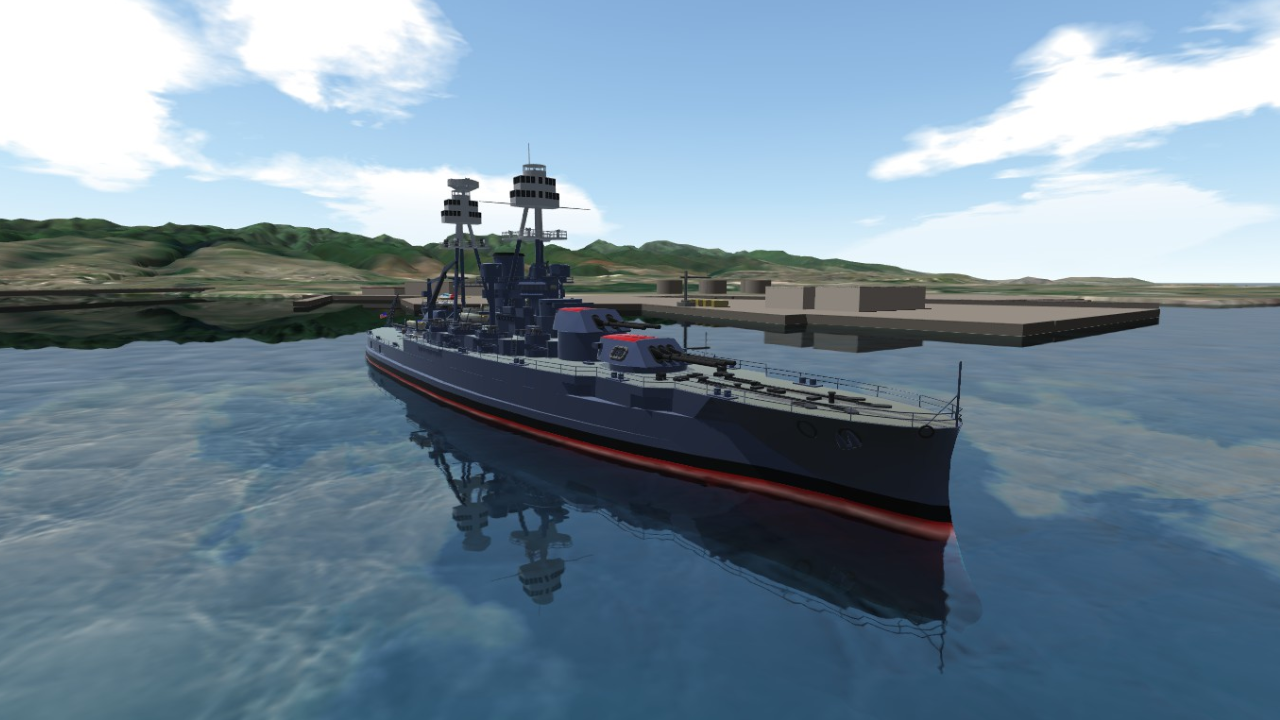
The map used on this screenshot is "Pearl Harbor" by MisterT
This build features accurate size, speed, a number of usable weaponry, working rangefinders and a flyable Vought OS2U 'Kingfisher' seaplane.
My main sources for modelling the Oklahoma was her rendition in World of Warships, as well as a number of blueprints.
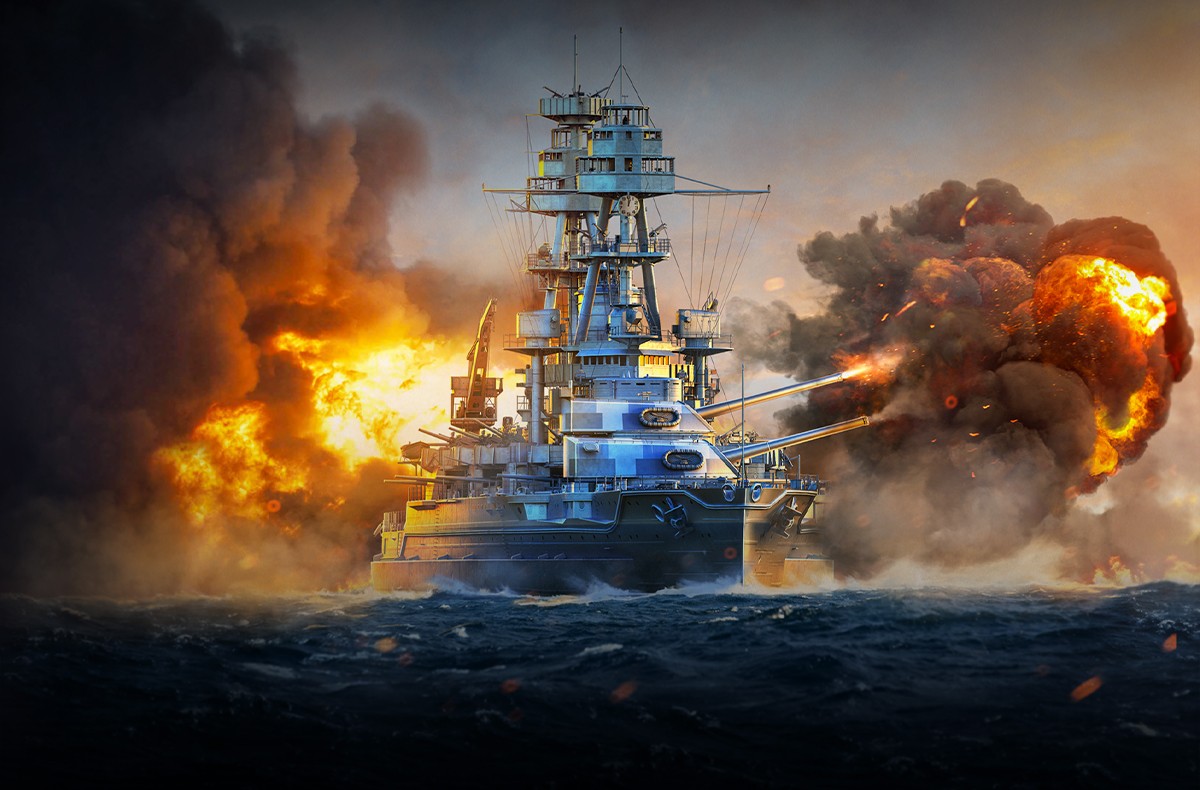
Controls:
AG1 + pitch-roll - 14 in Cannons
AG2 + pitch-roll - 5 in Cannons
AG5 - Seaplane leveling
AG6 - Launch and activate seaplane controls
AG6 + VTOL - Seaplane flaps
AG7 - Seaplane circling autopilot
AG8 - Ship controls
AG8 + Trim - Ship movement forward/backwards
AG8 + Yaw - Ship steering
CAM1 - Forward turrets rangefinder
CAM2 - Bridge viewCAM3 - Rear turrets rangefinder
****CAM4 - Seaplane chase view
****CAM5 - Seaplane orbit view
****CAM6 - Third person view`
**

The interior of the bridge
The Rangefinder:
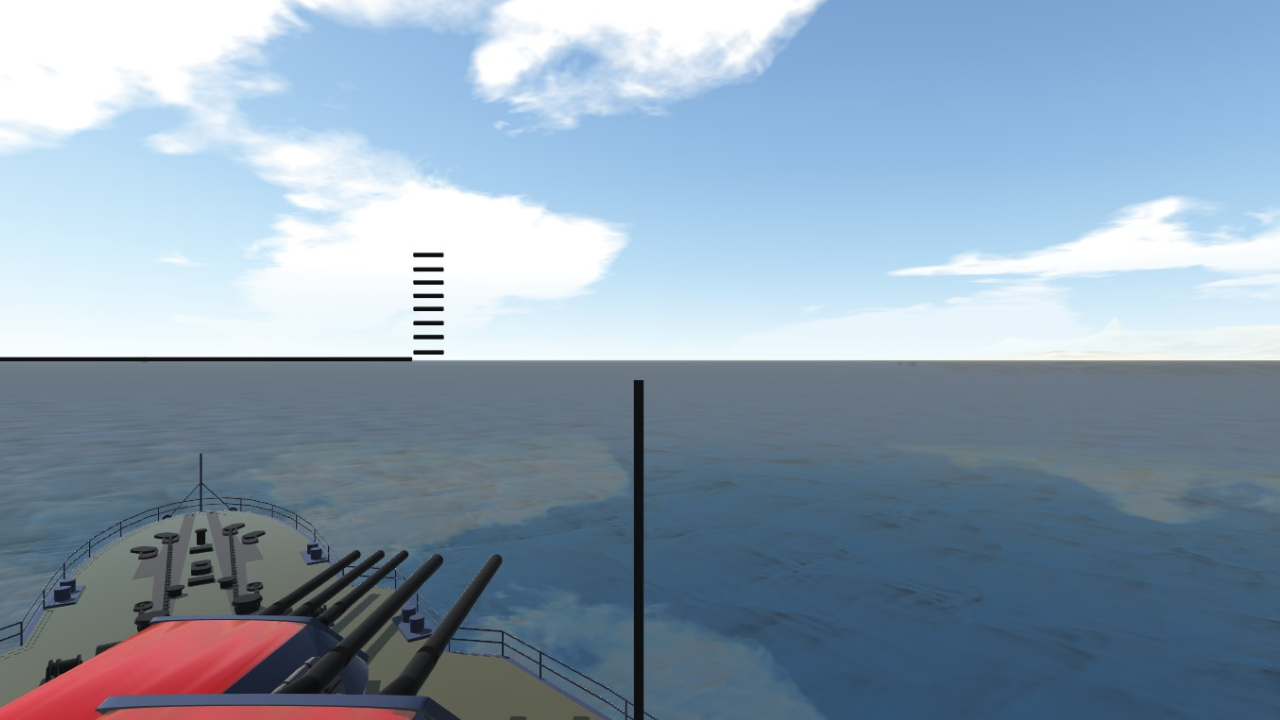
Each short line represents a nautical mile. If your target is let's say, 5 nautical miles away, you aim up until the long horizontal line is in level with the 5th short line.
IMPORTANT!
Seaplane Instrutions:
The seaplane can be a bit tricky but it works well if you get the hang of it.
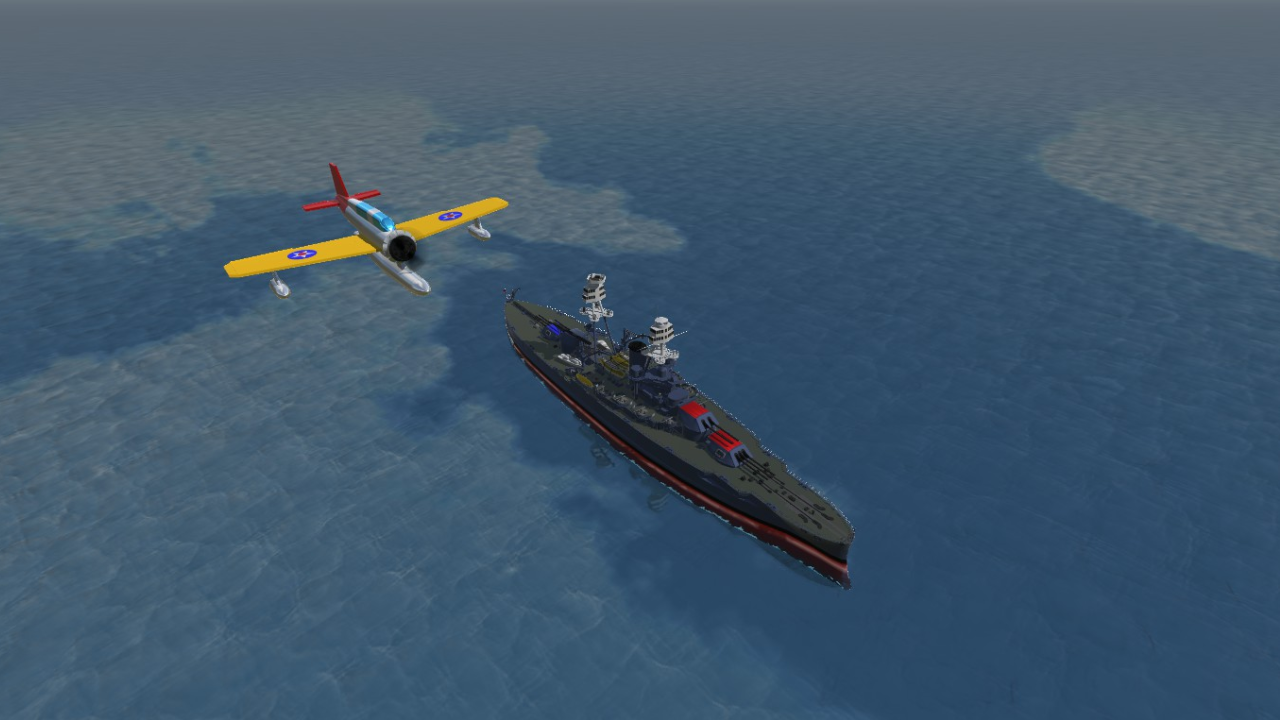
Launching:
To launch the seaplane, you have to set the launch direction by turning the turret number 3. Activate AG1 and rotate the turrets until the plane is clear to launch (the default position is good for launching too). Then turn off AG1 to hold the launch platform in place. Now set Throttle to 100%. Turn off AG8 (or you can leave it on, but it is recommended to turn it off) and turn on AG5 (not necessary but recommended) and switch to CAM4 or CAM5. Once you are ready to launch, activate AG6. Now you successfully launched the seaplane.
Flying:
Once you are in air, you can control the plane just like a regular airplane. Be careful with hard maneuvers, the plane can stall pretty easily (if that happens, turn AG5 on, and that will set the plane back on course).
If you want to go back to control the ship, turn AG5 and AG8 on and turn off AG6 (don't touch pitch, roll or yaw while turning AG6 off). Now you are free the sail the ship and the plane won't crash (unless you directed it towards a mountain, then it will certainly crash)
Spotting targets:
The seaplane is very useful when you want to shoot targets at long distances with the ship. To do this, you first need to locate the target. Once you found it, fly close to it but don't be perfectly above it, try to be a bit near above it. Once you are in position, Activate AG7. If you activate it at the right time and the right place (requires a bit of practice) the plane will set in a circling course above the target (lowering the throttle of the plane will make the circle course smaller). Now deactivate AG6 and activate any of the main guns. You need to have the Aim Predictor set to High in the game settings. Now aim with the guns and use the seaplane's chase/orbit view to see where your shells will/did hit.
Here is a gif to show you how it works in practice:

Taking-off from water:
If you land on water, to take-off from it, is a bit tricky task. you need to set Throttle to 100%, put VTOL to the lowest and turn off AG5. Now try pulling up with pitch but be careful not to pull it up too much or you will stall.
WARNING!
Be careful when firing the main cannons! Collisions are NOT turned off on them, therefore you are able to hit your own ship (don't worry about the small decorations tho, those won't collide with the shells but the hull of the ship does) so aim carefully!
Demonstration of the weaponry

Firing the main battery

Firing the secondary battery
As always, I hope you like this build and have fun with it!
Specifications
Spotlights
- Feanor 4.4 years ago
- AWESOMENESS360 4.4 years ago
- Typhoon03 3.9 years ago
General Characteristics
- Created On Windows
- Wingspan 100.1ft (30.5m)
- Length 787.7ft (240.1m)
- Height 176.1ft (53.7m)
- Empty Weight 36,063lbs (16,358kg)
- Loaded Weight 213,448lbs (96,818kg)
Performance
- Horse Power/Weight Ratio 0.014
- Wing Loading 28.5lbs/ft2 (139.3kg/m2)
- Wing Area 7,482.2ft2 (695.1m2)
- Drag Points 124789
Parts
- Number of Parts 2470
- Control Surfaces 7
- Performance Cost 6,779

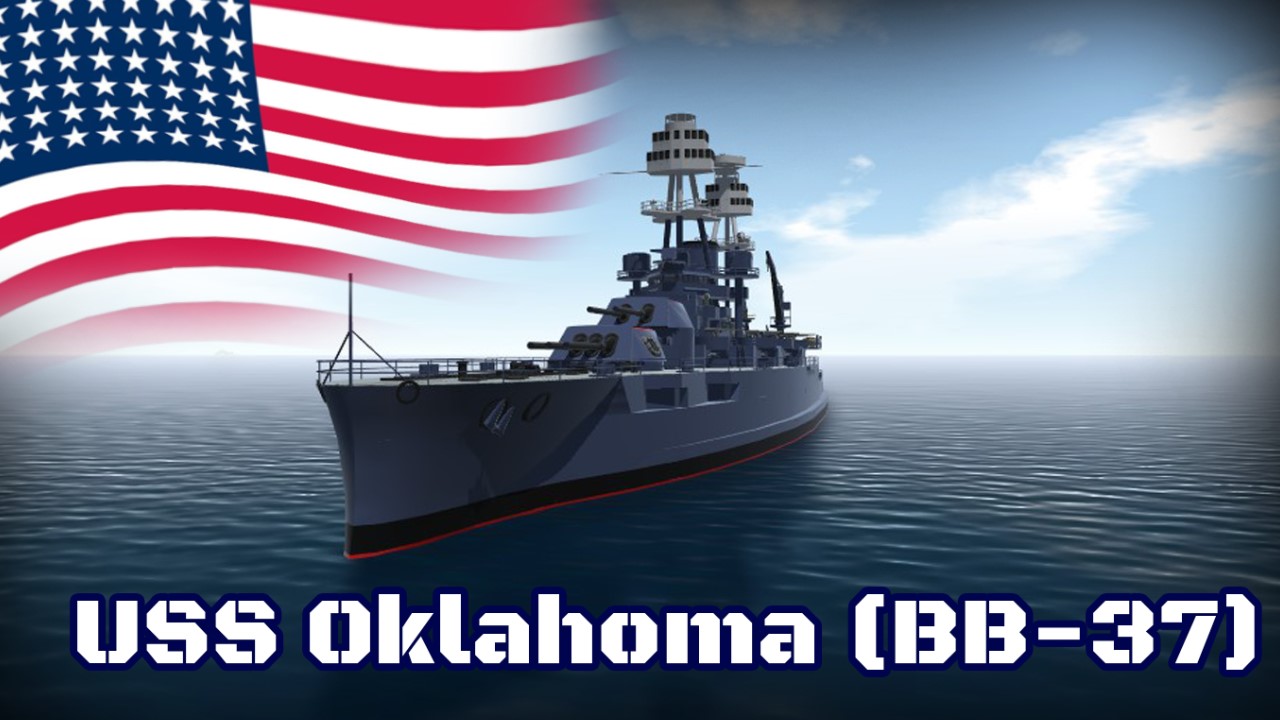

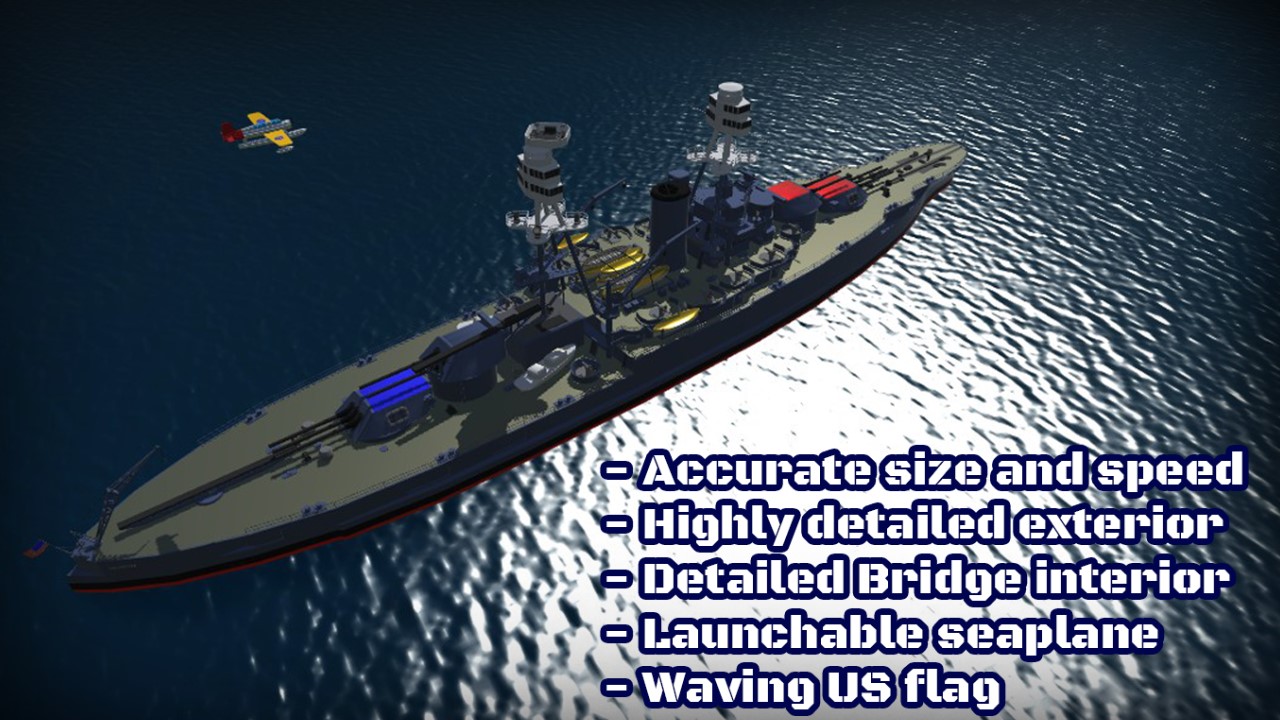
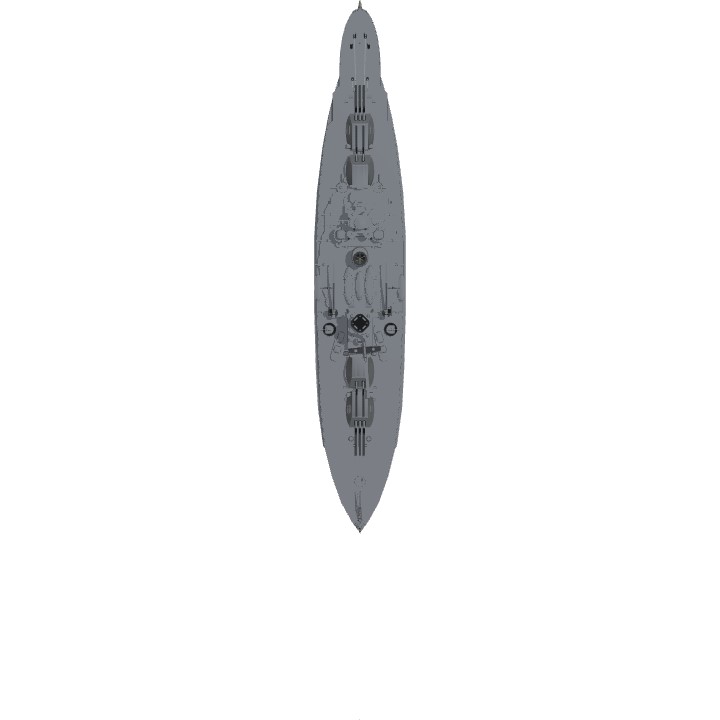
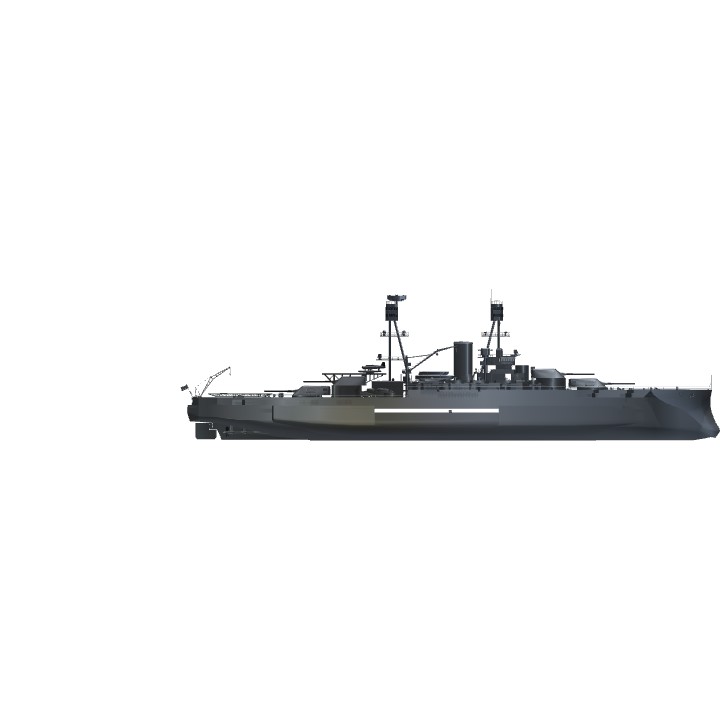
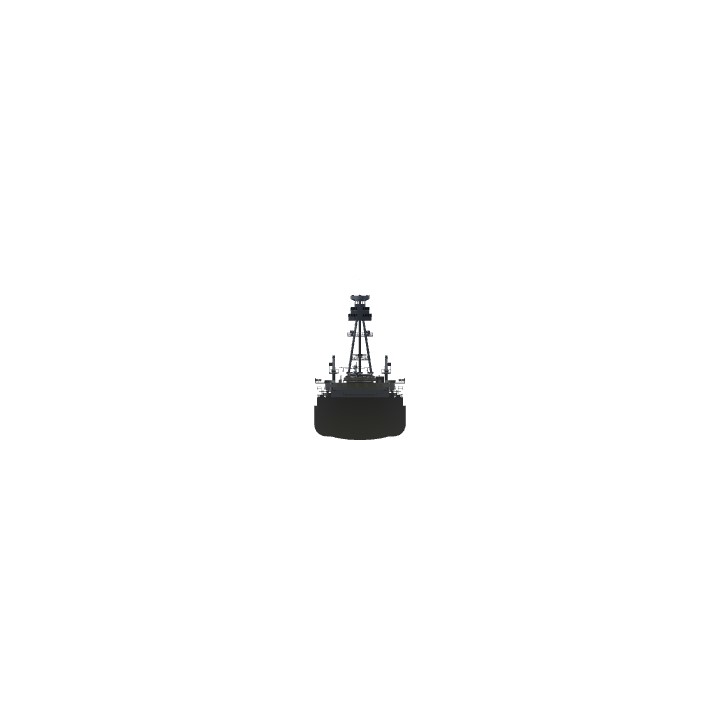
Note: there are some details (such as a working clock on the forward mast) that are not present on the screenshots as they were added after the screenshots were made
While you're here, I kindly ask you to fill this form for me: >>click here<<
It only takes a few minutes for you but it would help me a lot!
IRYBD22
Holy crab your ships are incredible!
Please make missouri
I was so excited to see this pop up in your list of planned builds and I've been waiting ever since I have a suggestion for a battleship for you to build: USS California (BB-44)
Me: looks cools and downloads
My old lenovo tablet: Oh sh*t here we go again
Fuh ember te aztán odatetted magad
Az életbe nem fogja elvinni a gépem, de nesze egy upvote :D
Hihetetlen munka
Damn
Friend, your battleship is incredible, I love the details, my first ship has been a Bismark, but I have not reached such a level, the truth is that I learned a lot with this baro, greetings. @BMilan
Awesome! Cannot wait to try it
@stevemc01 Check out my latest forum post
@MobilefriendlyT800
Almost forgot the one who requested it
The detail in this is astounding.
The goddamn drag and part count, less so lol.
.
This is why I build my models the way they are.
@Maestro1527
@Flyer77
@sharkysSPacc
@Thunderhawk
@ThatOneThiccPlaneStealer
@Strikercritsilver